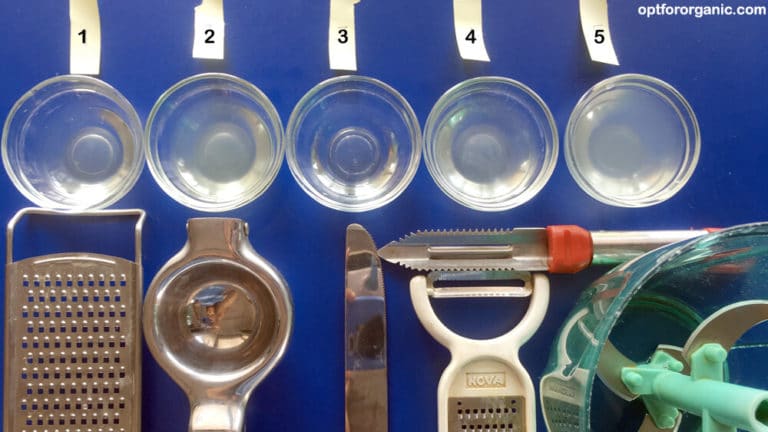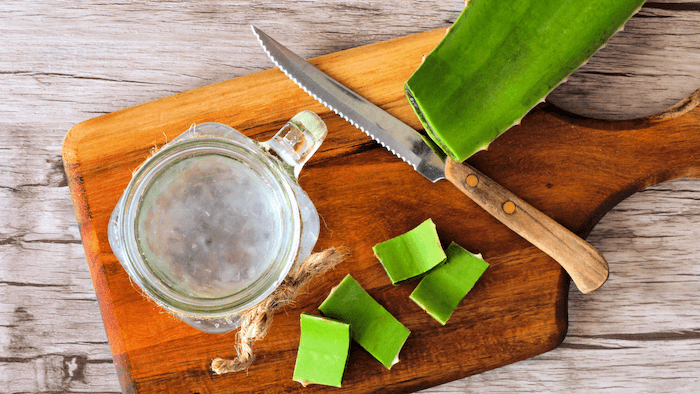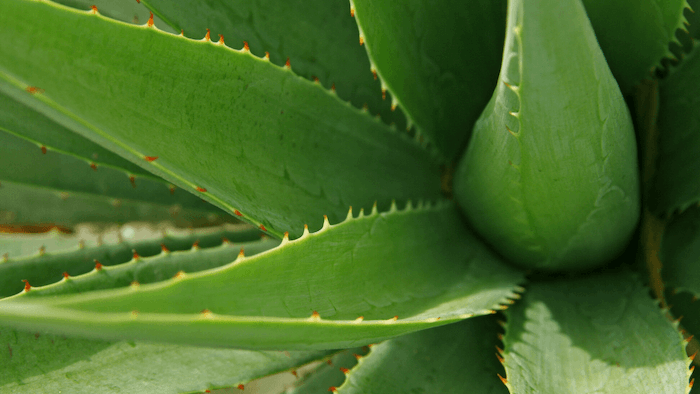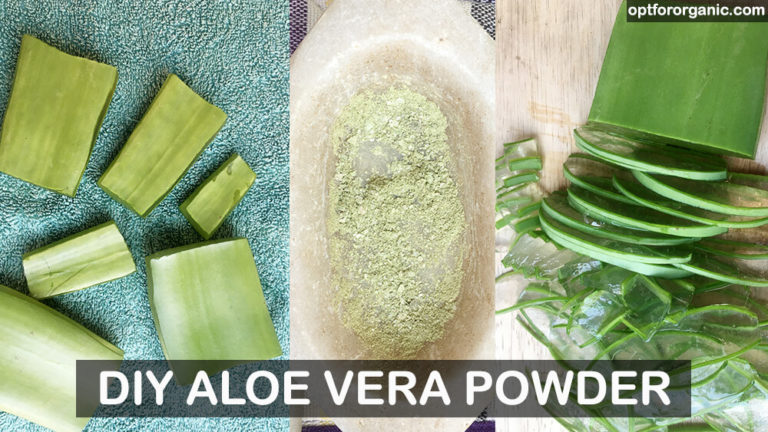What is Aloe Latex or Aloe Vera Latex?
Aloe Vera is an extremely useful herb that is widely used in making medicines and for many other purposes such as skin and hair care.
From ancient times, aloe vera has been used in abundance because of its wide range of benefits.
Aloe Vera belongs to a succulent plant species of the genus aloe. It can grow in the extreme type of climates as it requires less water to grow.
Aloe Vera is a popular domestic plant as it is used in fresh and pure form.
The Aloe Vera plant produces two substances in its leaf, the first one is the gum/ gel which is sticky and transparent in nature and is found inside the inner side of the aloe vera plant leaf and the other part is the aloe latex, which is found inside the plant’s skin, is yellow in colour and has a bitter taste.
As per recent research, it is found that the Aloe Vera whole leaf extract contains more than 200 chemical substances including the latex and gum part.
Aloe vera is also used in anti-ageing products, in hair care range, or to prevent burns and scars.
Although Aloe latex is quite beneficial for medicinal purposes, it should be used with caution as there have been instances where it has been proved hazardous for health.
Let us take a look in details about aloe latex.
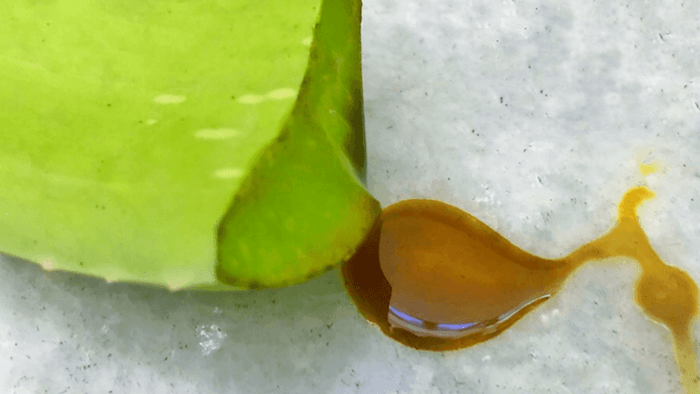
Content Index
Latex in Aloe Vera
When an Aloe leaf is cut into a piece, a yellowish liquid is secreted from the outer layer i.e. the latex present inside the Aloe Vera leaf.
As mentioned earlier, Aloe Vera is widely used for commercial purposes and both latex and gum are used in making various products. They can be used together as well as individually.
Moreover, they possess different properties, for instance, latex has laxative properties whereas gel mostly consists of water.
The most commonly used substance is the gel part of the aloe leaf as it does not possess any harmful toxins that can affect our health in a negative way.
Aloe Latex can be consumed orally but should be in the proper amount as overdosage can be harmful.
Is Aloe Vera Latex Poisonous?
As per clinical research aloe vera latex is non-poisonous but its excessive dosage may be hazardous.
Aloe vera latex contains anthraquinone, which is a chemical that carries some toxic properties which might be fatal for the human body if consumed in high doses.
Aloe Latex can be taken orally but should be in a minute quantity as it is mostly suited for external uses in order to prevent any harmful substances from getting inside the body.
As per research, unprocessed Aloe latex contains some chemical compounds that can be cancer-causing. Even processed Aloe latex can also release certain toxins that might be cancer-causing but it is much safer than unprocessed aloe latex.
Some reports state that even a small quantity of 1 gram a day for several weeks can damage the kidneys and can be life-threatening.
Experts believe that it should not be consumed without prior knowledge, whereas low doses can be effective for curing some diseases or ailments related to the stomach.
Prolonged usage of Aloe latex can include other symptoms such as diarrhoea, stomach cramps, vomiting, and nausea.
In the year 2002, the US food and drug administration banned the use of over-the-counter laxatives on the basis of safety issues.
It shows potential toxin and carcinogenic properties which makes it doubtful substance are quite unsafe to use.
Aloe Vera Latex Ingredients and Warnings
Aloe Vera latex consists of about 80 chemical components that are mainly phenolic in nature such as anthraquinone, anthrones, and anthraquinone C- glycosides.
Barbaloin or Aloin A is considered to be the main constituent of latex. It is a bitter-tasting, a yellow-brown coloured compound that exudes from an aloe plant leaf.
The other major components are isobarbaloin (aloin B), aloesin (aloeresin B), and aloeresin A.
Chromones such as aloe-emodin, aloeresin E, aloenin, and some aromatic compounds such as aldehydes and ketones are other components found in aloe latex.
Experts recommend that one should take low doses for a few days and then there must be a discontinuity between doses.
Overdosage or misusage of aloe latex can be harmful as it leads to severe ailments.
People with digestive diseases like Irritation Bowel Moment(IBD) can have an adverse effect if consume too much of aloe latex hence they should avoid taking it in high doses.
Some people are allergic to latex, as it can cause allergic reactions on the skin such as rash or burning sensation, cramps, and acne.
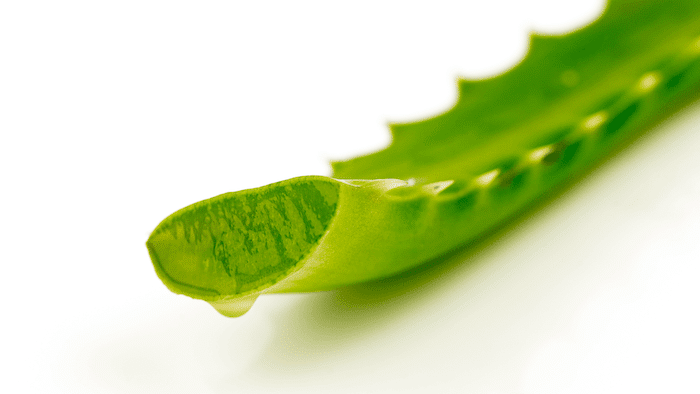
Aloe latex Benefits and Uses
Aloe latex has several properties that are helpful in curing variety of diseases. But it only requires Expert guidance to work effectively.
Aloe Latex has laxative properties due to anthraquinone that helps in curing digestion problems and increases liver functioning.
It can act as an astringent, that produces a constricting and binding effect to relieve an upset stomach.
It is also used for treating conditions like Epilepsy, Asthma, Colds, Bleeding, Depression, Varicose veins, and, problems related to vision.
As per clinical research, topical use of aloe may help to treat people with herpes simplex, lichen planus, or psoriasis.
Aloe latex is also useful in making aloe vera juice that can be taken orally to cure abdominal pain, flatulence, and intestinal problems.
The most common use of latex is in making dental hygiene products such as toothpaste and mouthwash.
Other uses are-
• For adding a bitter taste to some food products and in health drinks.
• In making oral latex capsules or tablets.
• Used with gum part of aloe leaf to make beauty creams or gels for antiaging or acne-related problems.
• Aloin found in latex can be used in dietary supplements.
Aloe Vera Latex Side Effects
There is a saying “everything in excess is opposed to nature” and therefore everything must be consumed in a proper amount.
Aloe latex has some medicinal benefits but should be taken in an appropriate amount to avoid side effects.
Overdosage of aloe latex can cause severe damage to kidneys, increases heart rate, and muscle weakness.
Low doses are quite less harmful and can be taken for few days but high doses for prolonged periods can be seriously fatal.
Higher doses react much easily and in some cases, it can cause damage to the liver but it is noticed mainly in the case of people who are hypersensitive to aloe.
To avoid serious ailments oral usage of aloe latex should be avoided and can be used externally for safe results.
High doses of aloe latex can be worst for diabetic patients as it lowers the blood sugar level at a very faster rate than normal and hence it should be consumed in the proper amount.
People suffering from diseases such as Crohn’s disease, ulcerative colitis, or obstruction in the intestines should avoid aloe latex as when taken orally it behaves as a stimulant laxative which can speed up the bowel movement.
Many skin products use both the gum part as well as the latex to form beauty products such as creams and gel. Aloe latex can be damaging for sensitive skin people or for those who are allergic to aloe.
Aloe latex can cause skin ailments such as rashes, red spots, or even allergic reactions. Therefore expert recommends that before using any beauty product an individual must apply to a small area on the skin in order to observe any allergic reaction.
Due to lack of safety, orally aloe latex should not be consumed by children, expectant mothers, or lactating mothers.
Aloe Vera Latex Allergy
Aloe Vera is mostly used for commercial purposes in various fields such as skin and beauty, medicine industry or for dental hygiene etc.
Individuals having hypersensitivity to aloe must avoid using such products as it can cause severe allergic problems.
Some people experience allergy with aloe latex as it has laxative properties that act as a skin irritant for sensitive skin.
Prolonged Usage of Aloe latex can cause severe allergic ailment such as anaphylaxis, this situation can be life-threatening as it provokes the immune system to release a large number of chemicals that can cause breathing and heart problems.
An accurate proportion of latex and gum should be used for acne treatment as aloe latex has laxative properties and if excessively used it can cause harmful effects on the skin.
Symptoms of Aloe Latex allergy include-
• Hives, itching, or stuffy or runny nose.
• Asthma-like symptoms such as chest tightening or difficulty in breathing.
To avoid any allergic symptoms always look upon the constituent ingredients before applying any skincare product.
Aloe Vera Latex for Constipation
Latex is mostly used in the manufacturing of Aloe Vera juice. It is liquefied either with gel or with other substances to make Juice.
Aloe Latex is extremely useful in stomach related problems such as constipation, Irritable bowel syndrome( IBS ) or even for abdominal cramps.
Aloe vera releases anthraquinone which has laxative properties. This particular chemical when taken orally soothes the stomach.
To cure chronic constipation, a mixture of aloe vera celandine and psyllium was developed to treat a range of constipation ailments.
Along with constipation, it can use to cure gastrointestinal disorders, including ulcers and inflammatory bowel disease.
It is mostly safe to use as it’s a natural remedy to get relief in constipation however few measures should be taken while consuming it.
It is available in the form of juice, capsules, or gel, therefore it’s quite convenient to consume.
Aloe latex should be used in small quantities as a higher dosage can be very harmful to health.
Aloe Vera juice without latex is mostly safe as the gel part does not contain any harmful chemical substances like anthraquinone which is laxative in nature. It is mostly made up of water hence it is more reliable for regular usage.
Aloe Latex Drug Interactions
1. Aloe Vera latex drug interaction for diabetes
Aloe latex when taken orally becomes laxative. Laxatives decrease the ability to absorb medicines in the body, therefore it can reduce the effectiveness of other medicines taking along with aloe latex medications.
Overdosage of Aloe latex can decrease blood sugar level and it can cause symptoms like confusion, heart palpitations, shakiness, and anxiety.
2. Aloe Vera latex interacts with Stimulant laxatives
Aloe latex becomes a stimulant laxative when consumed orally through the mouth. Stimulant laxatives are known for speeding up digestion hence increased bowel movements. Too much of this substance can cause dehydration and mineral deficiency.
3. Aloe Vera latex interacts with Warfarin ( Coumadin)
Diarrhoea is another symptom of stimulant laxative. Diarrhoea increases the effectiveness of warfarin and in worst cases, it can cause bleeding therefore it is advised not to take aloe latex with warfarin medications.
4. Aloe Vera latex interacts with Diuretic drugs ( Water Pills)
Laxative properties of aloe latex can cause a decrease in potassium in the body. Potassium deficiency in the body includes symptoms such as extreme fatigue, muscle cramps or twitching, and sometimes constipation.
5. Aloe Vera Latex interactions with Sevoflurane (Ultane)
Aloe latex decreases clotting of blood when taken orally. Therefore it should not be consumed before any major surgery as its combination with anaesthesia used during surgery can cause excessive bleeding.
References: nccih.nih / ncbi. nlm.nih

![DIY Aloe Vera Shampoos & Conditioners [Video Tutorial]](https://optfororganic.com/wp-content/uploads/2021/03/website-pics16-768x432.jpg)
